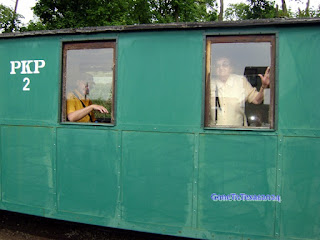The very first when I read the words "Rockhounds meeting", I though it would be about rock music. That was what "rock" meant to me. Music.
Well, the club appeared to be the place where quite different rock lovers met (and it was not related to music at all).
Growing up and living in a city, rocks were nothing more to us than useless "stones". You maybe kicked them while walking and seeing on a road, but you did not pick them up. You did not bring them home either. I remember what I was told when I was a child - "Do not bring stones home, they bring bad luck."
 |
The inside looks like a bone structure (?)
|
So we did not have rocks at home until now. Sometimes, during our walks in the countryside, we discover some interesting pieces (at least we find them interesting because of various reasons). It does not matter that most of them are quite usual and common in our area of Texas. They just look pretty to us and we like something about them, their shape, color, and/or structure.
With the Rockhounds we learned that flint and quartz in general are typical in the region of Texas we live in. There are also some other types of rocks that you can find in other parts of the state, but apparently not where we happen to stroll. Besides that, you can come across a piece of fossilized wood, or a fossil. The latter is a rare thing, though.
I cannot remember all the names of various rocks and its chemical components presented during the meetings, or in the videos we watched. So many names are quite similar, with little variations, due to their similar chemical elements. Most of them were totally new English vocabulary to me and sometimes, I needed to translate them to a recognizable version, to know what they were/meant. The blue topaz is the stone that you might come across in nature (if you are lucky enough) in the Mason County area.
Llanite is a rock that originates in Llano County, TX.
In the past, I never gave any thoughts to topazes, tortoises or agates. They were simply items you bought at a jeweler (if you had enough money). Somehow, I did not consider where else they could be found, certainly not somewhere in the ground.
An amazing thing is that a rock might look quite boring and plain-grey on the outside. When cut in half, or split, sometimes it turns to be very pretty and colorful inside. Some of those brilliant structure compositions are so beautiful that it makes you think: Nature is the greatest artists of all.
Regarding the "bad luck" mentioned above - it is up to you if you believe in it or not. As everything else in nature, each rock has its own vibration frequency. What we choose to pick up simply resonates with us. However, there might be something in what I was told in my childhood. Rocks, being part of nature, may be energy collectors/may have residual energy from the area were they originate from. To remove that energy residue/clear it, the net wisemen advise occasional soaking (for a few hours) the rock pieces in warm water.
Another and quite positive thing is that some rocks, including quartz, are supposed to have a beneficial influence on human body/aura.
PS
No, we have not found any precious stones. Not yet. :-)


.png)











.png)
















